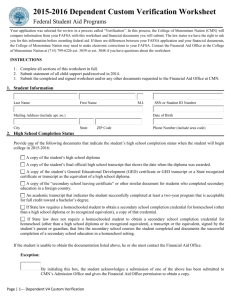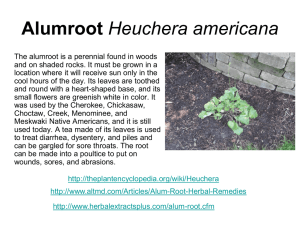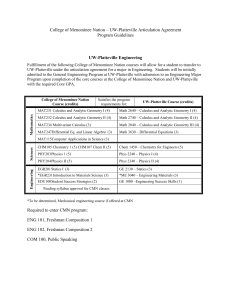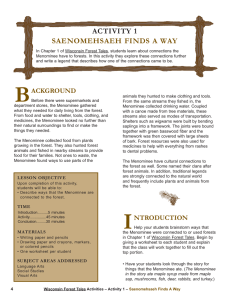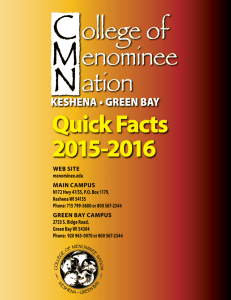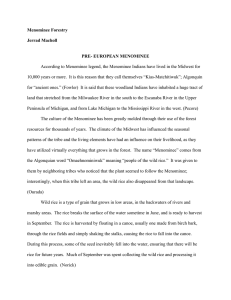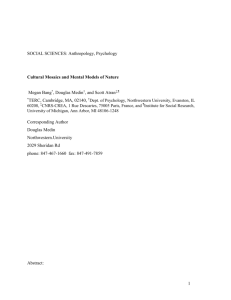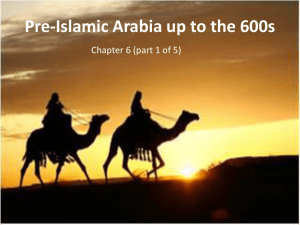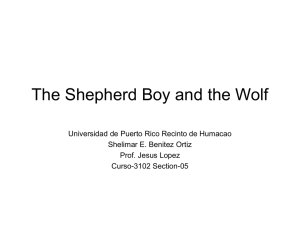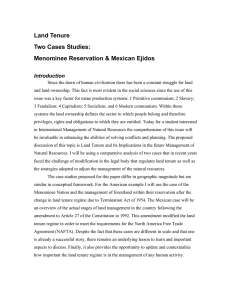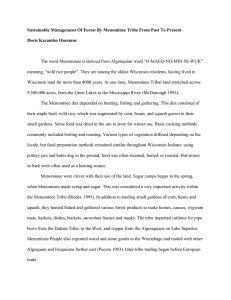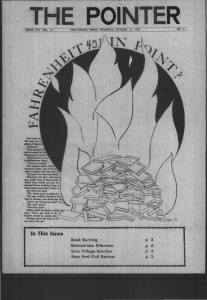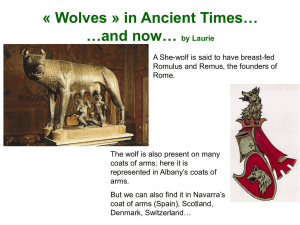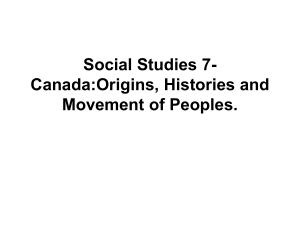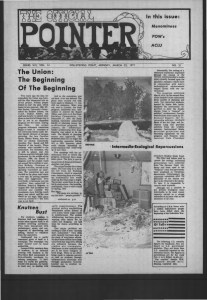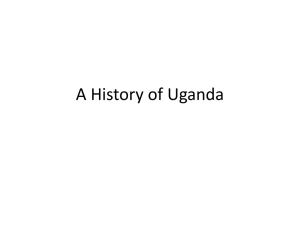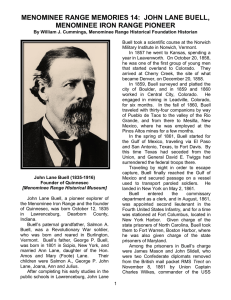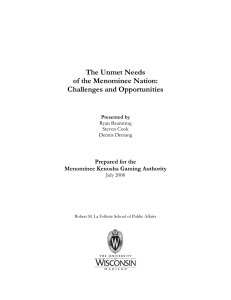The Menominee Native Americans (Power point)
advertisement
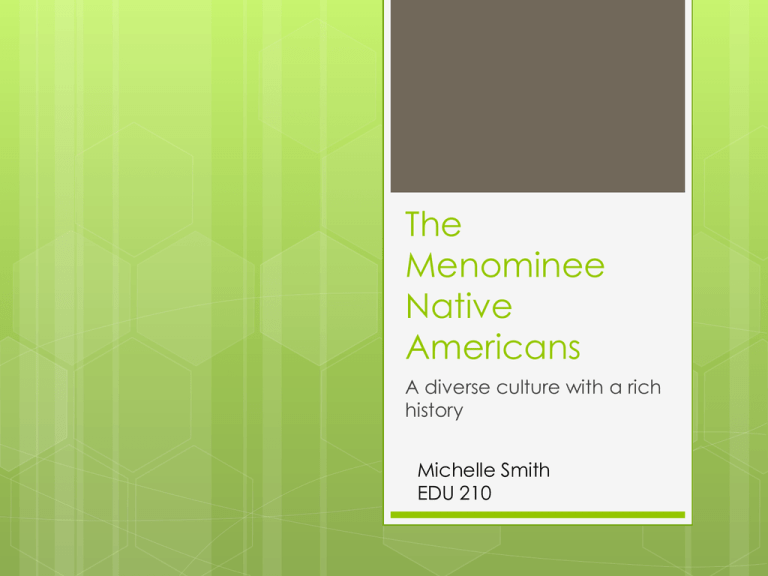
The Menominee Native Americans A diverse culture with a rich history Michelle Smith EDU 210 History history Oldest continuous residents of Wisconsin At the start of the treaty era, in the early 1800’s, the Menominee tribe occupied a land base of an estimated 10 million acres. Brief timeline 1634: Jean Nicolet, French made contact with the Menominee 1775: Some fought against the American in the Revolutionary War 1812: War of 1812, Some fought against the Americans 1854: gave up lands except for a reservation on Wolf River in north-central Wisconsin 1954 -1973: federal status Terminated Two part plan 1961: Menominee Tribe of Wisconsin was terminated, Tribal membership 3,270 Tribal land (Acres) 233,881 1972: Menomiee Restoration Act restored tribe Treaties 1817 March 30, at St. Louis, with the Chippewa 1825 August 19, at Prairie du Chien, with the Sioux, Etc., 1827 August 11, at Butte des Morts 1831 February 8, at Washington 1831 February 17, at Washington 1832 October 27, 1836 September 3, at Cedar Point 1848 October 18, at Lake Powawhaykonnay 1854 May 12, at Falls of Wolf River 1856 February 11, at Keshena Spirituality Spiritual beliefs Believed that children and elders were closest to the spirits If a baby was unhappy, a special healer would find out why. Often it was thought that a certain ancestor spirit has been reborn in the baby and wanted the baby’s name changed. Therefore, a naming ceremony was held to give that child that ancestor’s name. Creation Story Night and day The Afterlife Culture Culture Algonquin speaking nation Menominee refer to themselves as mameqtaw meaning “the people” Other indian tribes call them menominee, derived from manomin- an algonkian word for wile rice as it is a staple food for the tribe. (mpm.edu) French called them “the nation of wild oats” Culture Lived by hunting, fishing and gathering Wild rice= staple food Augmented by corn, beans and squash Some food was dried in the sun to save for the winter Boiling and roasting were common cooking methods Maple sugar and syrup were commonly used as sweeteners and flavorings Geography Once occupied over 10 million acres of land which is now central and mideastern Wisconsin Culture- Clans Clans Bear Eagle Moose Crane Wolf (Facts and figures 2004) Bear Clan Speakers and keeper of the law Eagle/Thunder Clan Freedom and justice Moose Clan community or individual security Crane Clan Crane Clan: architecture, construction and art Wolf Clan Hunting and gathering Current location Current location: Current Menominee indian reservation is located about 45 miles northwest of Green Bay. The reservation is 235,523 acres and countains roughly 223,500 acres of heavily forested lands Affects on the tribes social and economic conditions today Today Menominee are on their way to economic progress Multi-million dollar organization Provides employment to its people along with services such as a clinic, police protection, and a Tribal school Comparison lgonquian and Great Lake Tribessuch as Ojibway (35,000), Delaware Northeast (8,000), Powhatan (9,000) Massachuse t (13,600), and Cree (17,000) Iroquois Tribes such as Mohawk, Oneida, Onondaga, Northeast Cayuga, Seneca, and Tuscarora (Total 5,000) wigwams wore little clothing except in winter made from animal skins long house hunters planters mostly gatherers buckskin tradersThree (skin of deer) Sisters (corn, squash, & beans) huntersgathe pow rers wowssnows trappers nake planters Birchbark baskets and canoestraps formed Confederacy canoes many snowshoes festivals Pocahontas (1585?-1622) PowhatanPontiac birchbark (1720?-1769) boxeswampu Ottawa m Tecumseh (1765?1813) Shawnee dream Black Hawk (1767catchers 1838) Sauk Squanto (1585?1622) Patuxet False Face Society wooden masks Significance
